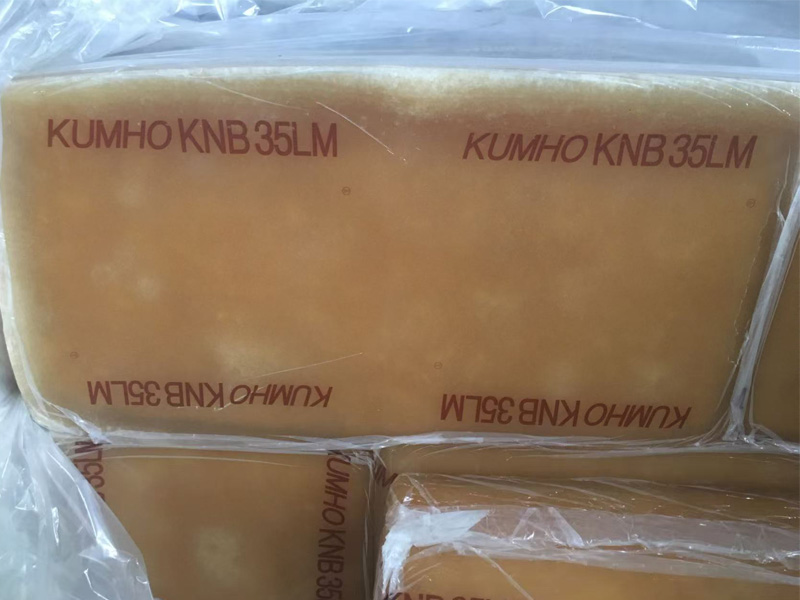-
Home
- About Us
- Products
Classify- Company News
- Industry News
Industry News
Varieties Of Nitrile Rubber Compounds
2025-05-13Nitrile rubber (NBR) is a copolymer obtained through emulsion polymerization of butadiene and acrylonitrile monomers, known as butadiene-acrylonitrile rubber, abbreviated as NBR.
There are numerous grades of NBR, totaling over 300.
The acrylonitrile content in NBR ranges from 15% to 50%. It is generally classified into five series based on the acrylonitrile content in the polymer:
- **Very high acrylonitrile NBR**: Acrylonitrile content above 43%;
- **High acrylonitrile NBR**: Acrylonitrile content 36–42%;
- **Medium-high acrylonitrile NBR**: Acrylonitrile content 31–35%;
- **Medium acrylonitrile NBR**: Acrylonitrile content 25–30%;
- **Low acrylonitrile NBR**: Acrylonitrile content below 24%.However, the majority of commercially available products fall into the high, medium-high, and low acrylonitrile content categories.
In terms of performance and application, NBR can be divided into **general-purpose NBR** and **special-type NBR**. The former refers to the binary copolymer of butadiene and acrylonitrile, which is widely used. The latter includes terpolymers with a third monomer, such as carboxylated NBR (XNBR), antidegradant NBR, partially crosslinked NBR, NBR ester rubber, hydrogenated NBR (HNBR), and NBR blended with polyvinyl chloride (PVC).
Morphologically, in addition to solid NBR (block or granular), there are also **powdered NBR**, **liquid NBR**, and **NBR latex** (including carboxylated NBR latex).
Different countries have their own naming conventions for NBR grades, as outlined below:
1. **China (Lanzhou Petrochemical Synthetic Rubber Plant)**:
- Uses **NBR** followed by a four-digit code.
- The first two digits indicate the lower limit of acrylonitrile content.
- The fourth digit represents the tens digit of the Mooney viscosity lower limit.
- Example: **NBR 1704** indicates acrylonitrile content of 17–20%, Mooney viscosity of 40–65, and a pollution-type high-temperature polymerized NBR.
- Carboxylated NBR is denoted as **XNBR**.2. **USA (Goodrich Chemical Company)**:
- Uses the trade name **Hycar** followed by a four-digit code.
- The first two digits indicate the form: **10** (block), **B** (liquid), **14** (powder).
- The third digit represents processing/performance characteristics: **0** (standard), **1** (easy processing), **3** (easy dissolution), **4** (low-temperature polymerization).
- The fourth digit indicates acrylonitrile content: **1** (high), **2** (medium-high), **3** (medium), **4** (low).
- A suffix of **72** denotes carboxylated NBR.3. **Canada (POLYSAR)**:
- Uses **KRYNAC** followed by either three or four digits.
- The **800** and **820** series are standard, while **100** and **200** denote carboxylated NBR.
- In the four-digit format, the first two digits indicate acrylonitrile content, and the last two represent Mooney viscosity (e.g., **27.50** means 27% acrylonitrile, Mooney viscosity 50).4. **Japan (Zeon Corporation)**:
- Uses **Nipol** followed by either **DN** + three digits or **N** + two digits.
- In **DN XXX**, the first digit indicates acrylonitrile content:
- **0** (very high), **1** (high), **2** (medium-high), **3** (medium), **4** (low), **5** (PVC-modified).
- In **N XX**, the first digit (**2–4**) indicates acrylonitrile content (higher number = lower content), and the second digit denotes properties:
- **0** (standard high-temperature polymerization),
- **1** (standard low-temperature polymerization),
- **3** (low viscosity, non-corrosive to metals),
- **4** (carboxylated NBR),
- **2** (improved extrusion/processing).5. **Germany (BAYER)**:
- Uses **PERBUNAN** followed by four digits.
- The first two digits indicate acrylonitrile content, and the last two represent Mooney viscosity.
- The suffix **NS** denotes non-staining grades.6. **Former Soviet Union**:
- Uses **CKH** followed by two digits, indicating acrylonitrile content.
- The suffix **M** denotes easy-processing grades. Copyright @ 2024 Qingdao Pentaflex Co., LTD .All Rights Reserved
Copyright @ 2024 Qingdao Pentaflex Co., LTD .All Rights Reserved - About Us







